28-Dang — A Bicycle that Moved Socialist and Early-Reform China
Written by Xiaomeng Liu
Published on 02/03/2021
In 1989, U.S. President George H. W. Bush went on an official visit to China just one month after assuming office. On February 25, the president and the first lady landed in Beijing and were received by then Chinese Prime Minister Li Peng at the Diaoyutai State Guesthouse, where they were gifted a pair of Flying Pigeon (飞鸽) bicycles. The bicycles were newly designed models — one gentlemen’s and one ladies’ model — released just a few months prior by one of China’s largest bicycle producers, the Tianjin Bicycle Plant.[1]

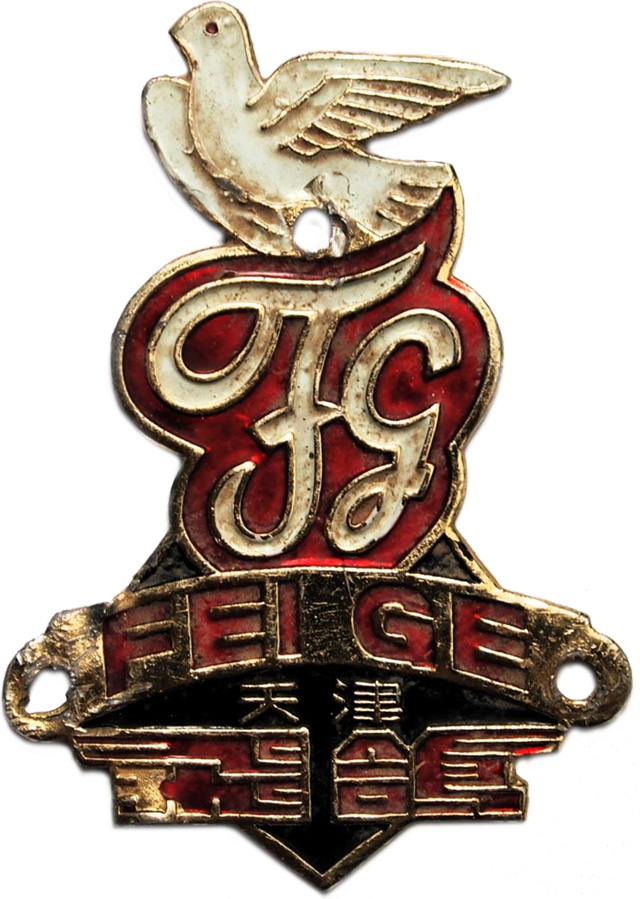
This was not the first time that the Bush couple had come to China. About a decade before, Bush served as Head of the U.S. Liaison Office in China. During their sojourn in Beijing, the couple would frequently visit tourist sites on bicycles. A well-known picture of them taken during this period shows the couple posing in front of Tiananmen with their bicycles. The trademark on Bush’s bicycle shows that it was from another popular Chinese brand, Forever (a major rival of Flying Pigeon) from Shanghai. In the photo, President Bush looks to be riding the most popular type of bicycle in China of the time, a model that was conventionally known as the “28-dagang” (二八大杠, which translates literally into “28-inch wheels and a big rod”).[2]
The Bushes’ visit cemented the image of 1980s and 1990s China as “a kingdom of bicycles.” The expression was likely coined by foreign observers who were amazed by the sheer number of bicycles streaming down the main streets of Beijing that they saw in the early 1980s. China also adopted this phrase for its own propaganda, taking the ubiquity of bicycles in the Chinese society as a symbol of development and prosperity. In socialist China, a bicycle, a wristwatch, a sewing machine, and a radio were the four big items that any modern, happy family should possess, and were therefore most coveted by the people. In the 1980s, Chinese leader Deng Xiaoping, who launched the reform and opening up of China, defined prosperity as “every family having a Flying Pigeon bicycle.”
Such politics and poetics surrounding bicycles in modern China have attracted much scholarly attention,[3] but there is a gap in the literature, which the following succinct exploration of a particular type of bicycle attempts to address: the model of bicycle was the 28-dagang, which predominated the streets of socialist and early reform China. The 28-dagang has been mostly overlooked by academic research, yet, considering its historical popularity and ubiquity in urban China, a more rigorous look at these bicycles is prudent for us to understand their place not only in China’s society but also in many Chinese people’s psyche.
Origin of the Bicycle Industry in Modern China
Bicycles were introduced to China in the late 19th century. Back then, not only were bicycles exotic, they were also a luxury that very few people could afford. Those wealthy Chinese who owned bicycles considered them a wonder from the West, rather than something practical for everyday use. As a result, during this time, most bicycle users in China were expatriates. It is no wonder that it was treaty ports, rather than the capital city, that first imported bicycles into China, as they were where most of the large foreign concession areas were located. These ports included Shanghai, Tianjin, Canton, and Qingdao.
The bicycle industry in China began in Shanghai, the most developed modern metropolis in Republican China where foreign commodities and lifestyle were adopted and appreciated. In 1897, a Chinese entrepreneur called Zhu Tongsheng (诸同生), who used to run a business that repaired carts and rickshaws, started up a sales agency called Dong Chong Cycle & Motor Co. (同昌车行). The agency imported vehicles including bicycles, rickshaws, and small cars to Shanghai. Rickshaws were the dominant mode of transportation in urban China during the republican period, but beginning in the mid-1910s, bicycles gained popularity as postal services and police departments in the big cities adopted bicycles as their workhorse.[4]
Small workshops that repaired and reassembled bicycles soon appeared in major treaty ports after bicycles were introduced to China, most of which established by foreign entrepreneurs. Among the bicycle workshops and factories, Changho Works, established by Japanese entrepreneur Kojima Wasaburo, was the most prominent. It had three branches in Shenyang, Tianjin, and Shanghai.[5]
After the Second World War, Changho Works’ plants were seized by the Nationalist government, and were later re-organized into three state-owned bicycle plants after a Communist takeover: the Shenyang, Tianjin, and Shanghai Bicycle Plants. Dong Chong, which had been Shanghai’s most famous bicycle producer, continued to exist into the early socialist period, but in 1958, it was turned into a state-owned company and was renamed the “Shanghai Third Bicycle Plant.”[6] The Tianjin, Shanghai, and Shanghai Third Bicycle Plants would go on to become the top three bicycle producers in socialist and early reform China.
The 28-Dagang
In 2017, Ofo, one of China’s bike-sharing giants, and the Shanghai Phoenix Bicycle Co. Ltd., one of the largest bicycle producers in China, announced the launch of a new model — a replica of an old-fashioned bicycle called the “28-dagang” (Ofo did not intend to use it to replace other of their bicycle models, however). The 28-dagang was not popular, perhaps most likely because it was not easy or comfortable for most people to ride. It did, however, evoke a national nostalgia nonetheless, as, for generations that have grown up in the 1980s and 1990s, it used to be the most important vehicle in their household. Today, the dagang has all but disappeared from the streets of urban China (except in the case of certain professional bicycles).
The term “28-dagang” was a colloquially concocted name to refer to a particular bicycle model: the number “28” referred to the 28-inch wheels of the model; “dagang,” which literally translated to a “big rod,” referred to the bicycle frame’s sizable crossbar. These were also the parts where this model differed from current popular models in China the most. Nowadays, although different bicycle models are seen in the streets of China, most of them have 26-inch wheels. For ordinary Chinese people, the 28-dagang would not have been easy to ride — not only were the wheels too big, thereby propping the frame and saddle up too high, but the horizontal crossbar itself also presented quite a hurdle for anyone trying to swing one leg over in order to mount the bicycle. The large size would have made it difficult to control as well.
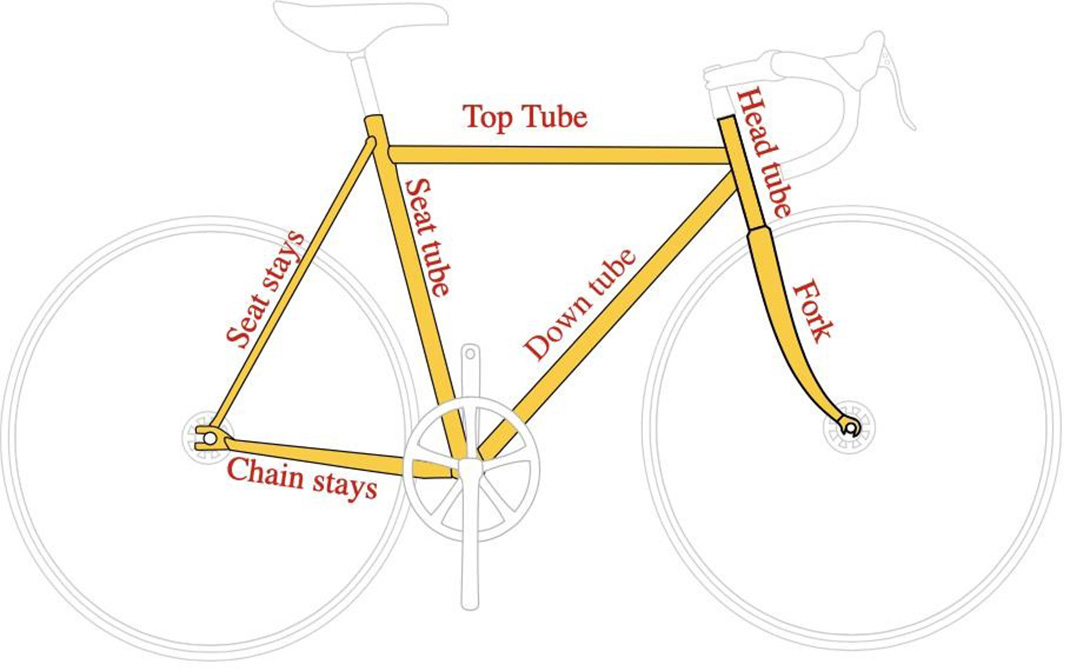
In the 1950s, the Shenyang and Tianjin Bicycle Plants respectively designed new bicycles specifically for men. These bicycles had 710 mm wheels (approx. 28 inches),[7] and so were early versions of 28-dagang. A decade or so later, the prototype was refined by the two bicycle plants in Shanghai. The Shanghai and Shanghai Third Bicycle Plants released the PA-13 and PA-14, respectively, around 1964. The “P” in their model number stood for “putong xing” (普通型, “common” type), and the “A” signified a “men’s bicycle with 28-inch wheels.” The numbers 13 and 14 indicated that these products were the 13th and 14th models released by their respective plant. Later, the PA-13 was branded as the flagship product of the “Forever” brand, and PA-14 became the primary product of the “Phoenix” brand. The Tianjin Bicycle Plant also released a similar “28-inch men’s bicycle” model that went on to become the most popular model of their brand “Flying Pigeon.” These three brands soon gained national fame. Other industrial cities in socialist China such as Shenyang, Qingdao, and Canton also had their local bicycle plants, but their products were only known regionally.[8]
“28-dagang” was therefore not a singular brand or model but an overall design. Why and how, however, especially considering how it was difficult to ride, did they come to dominate the bicycle scene of socialist China? The reasons are quite straightforward: first, at the time, most bicycles around the world had the same similar design; second, bicycle makers of socialist China were in their early days and did not have the ability to work out their independent designs, so they modeled most of their bicycles after those manufactured by other well-known bicycle producers in Europe. One of those models was produced by the famous British bicycle maker Raleigh.
Founded in 1885, Raleigh was not only one of the world’s oldest bicycle companies, but at one point also the largest bicycle producer.[9] In 1963, a new superintendent took office in the Shanghai Third Bicycle Plant and set a new goal for the factory to manufacture a new flagship product that would surpass Raleigh’s bicycles both in terms of quality and main technical specifications. For good measure, Phoenix seemed to have taken Raleigh’s trademark too — as some people have pointed out, Phoenix’s logo resembled Raleigh’s, which featured the head of a heron.
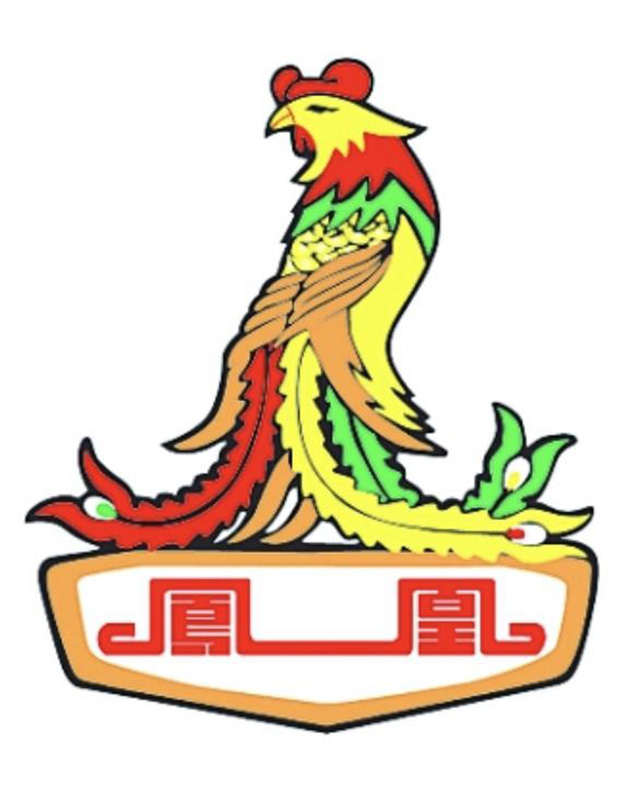
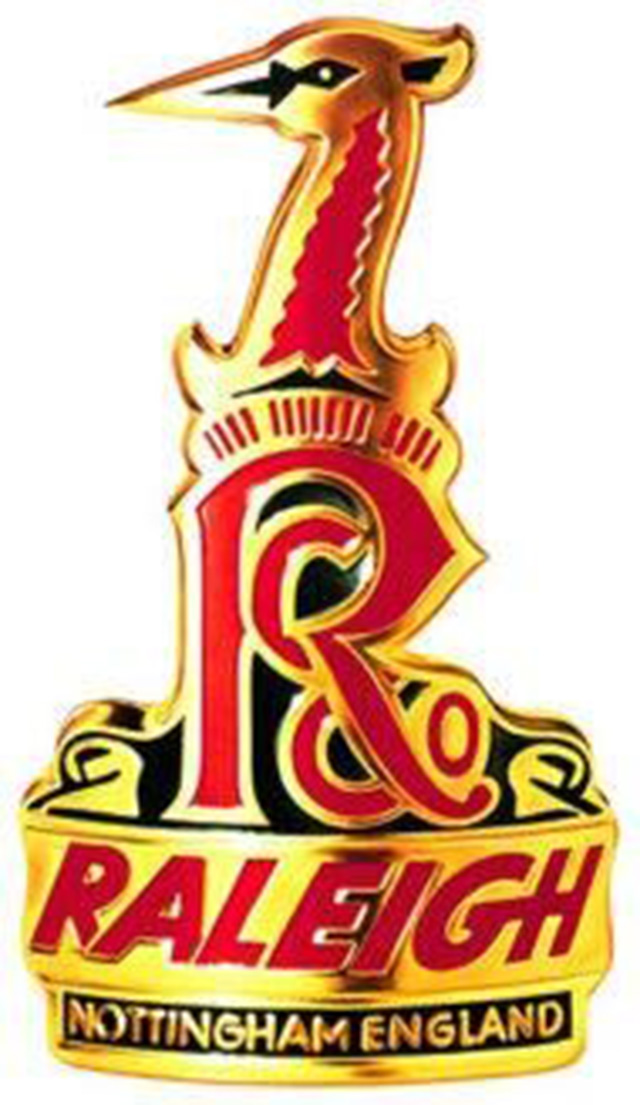
What this superintendent was asking of Phoenix was in line with the spirit of the “Great Leap Forward Movement” — “to surpass the UK and catch the U.S.” By then (1963), even though the movement had already passed its peak, the superintendent retained that spirit when he took several duplicates of Raleigh’s bicycle, gave them to the engineers and workers in the factory, and asked them to work around the clock to reverse-engineer the bicycles. Such was the birth story of the PA-14, which would go on to win first prize in the national appraisal of bicycles the following year, and quickly gain national fame as well as becoming a best-selling bicycle across the country.[10]
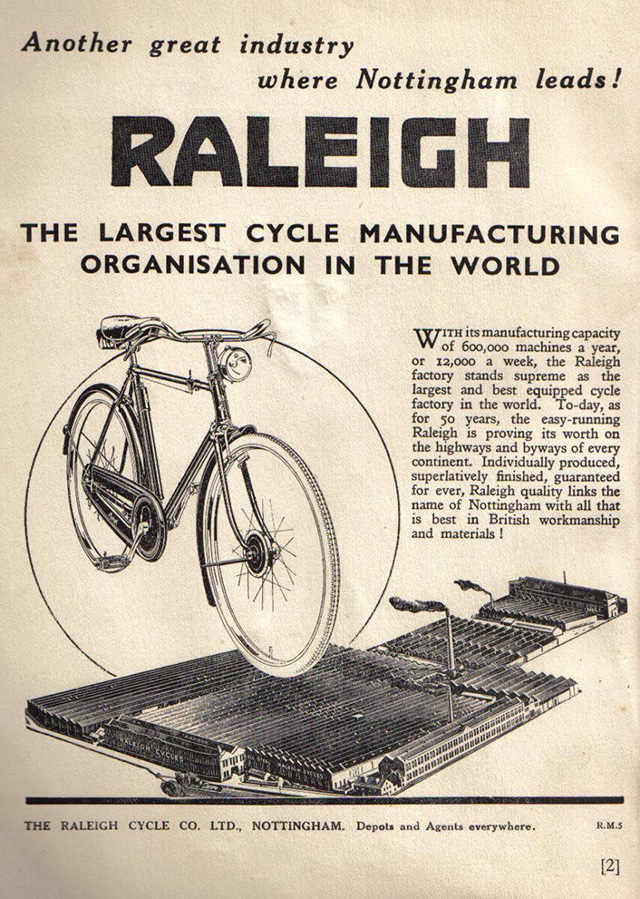
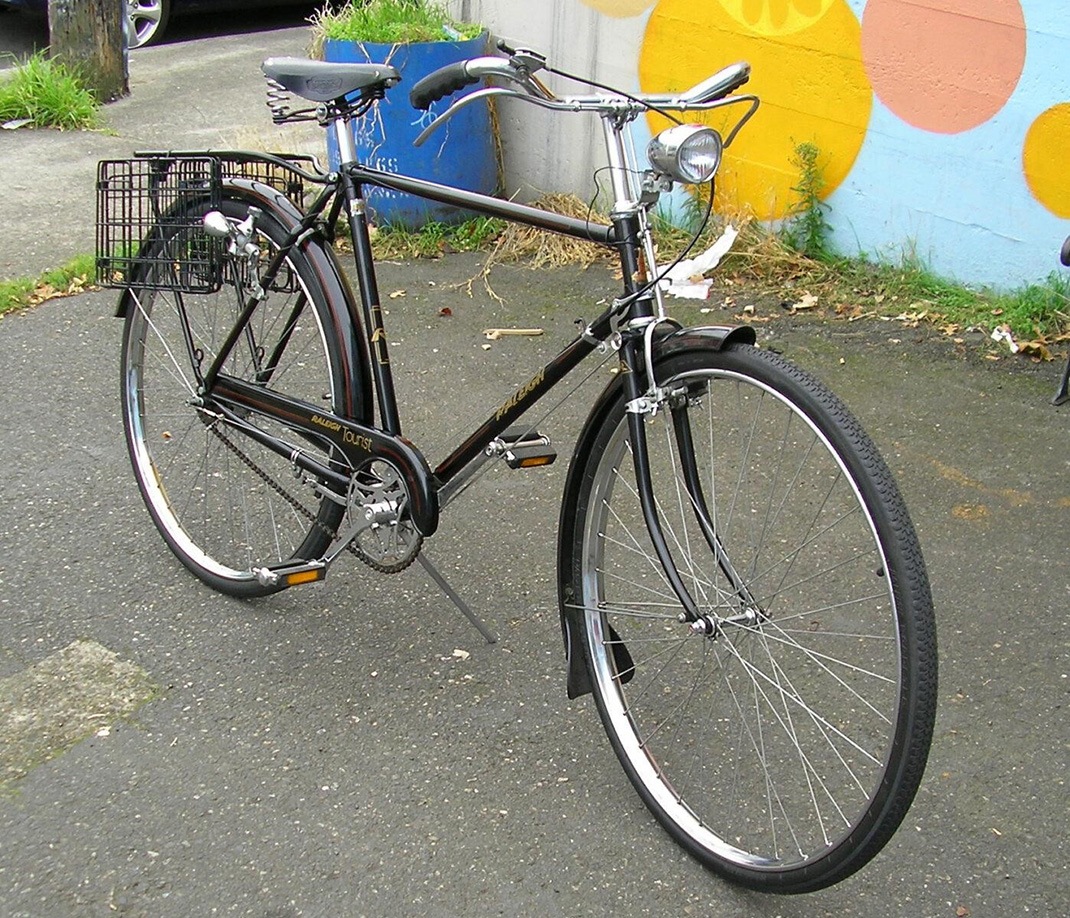
There is no specific record on which of Raleigh’s models the Shanghai Third Bicycle Plant modeled its PA-14 after, but it was likely the Roadster, the most popular model of the early 20th century in Europe.[11] The classical gentlemen’s roadster had many defining features in its frame, brakes, hub gears, and wheels, most notable of which being the diamond frame, chaincase, and the 28 × 1½ inch (ISO 635 mm) wheels. The diamond frame, the core component of the bicycle, consisted of two triangular structures onto which the wheels and other components were mounted. The main triangular structure in the front included a top tube, a down tube and a seat tube. In the classical design, the top tube was horizontal, and was the part that the Chinese called the “dagang.” The 28 × 1½–inch wheel had a 28-inch rim and a tire that was 1½ inches thick (the 28-dagang’s wheels were similarly sized). The chaincase, which protected the bicycle’s chain and sprocket assemblage, was also present in the 28-dagang design (most Chinese designs only had a half, instead of full, chaincase). All these features all but confirm that the 28-dagang, rather than being an original design, was in fact modeled after the mid-20th century’s most common bicycle model. It is therefore no wonder that both of Shanghai’s bicycle plants gave their models a letter P designation — for “putong,” i.e., the “common” type.
Riding the 28-Dagang
There are three mainstream methods to mount a bicycle: ready mount, side mount, and cycle-cross mount. Ordinary Chinese people today most frequently mount a bicycle via something similar to the ready mount method, which is easiest. One just needs to sit on the saddle, put one foot on the ground to keep balance, and pedal the other side to get the bicycle moving. However, one can only apply this method if the seat is low enough for the feet to touch the ground, and this was not easily done on the 28-dagang as it sat too far up for most Chinese at the time (possibly even today). When seated on the saddle bestriding the crossbar, it is difficult or even impossible for a man of average height to reach the ground with his feet. Therefore, the Chinese people tended to resort to another way to mount a bicycle: the side mount method.
For the side mount, the rider needs to first stand on the left side of the bicycle, with both hands holding the handles. Then, the rider puts the left foot on the left pedal, then pushes off on the ground with the right foot (a couple times) to get the bicycle into motion and to gain enough speed. As the bicycle rolls forward with enough balance and stability, the rider exerts force on the left leg to prop the body upright enough to facilitate swinging the right leg around and over the back wheel to the right side. Now s/he can sit down on the saddle and pedal away. The sequence of moves can be mirrored for mounting the bicycle from the ride side, and, to dismount the bicycle, the rider reverses the sequence of movements. Nevertheless, the side mount takes more time and effort to learn than the ready mount, since it is difficult to control and balance the bicycle while swinging one leg over to the other side, and the size of the 28-dagang did not make things anything easier.
However, despite both features of the 28-dagang making it difficult to ride, it became every bit as “popular” as it was. One of the reasons that no smaller bicycles were available on the market could simply be because the bicycle makers had difficulty producing their own proprietary frames and parts. More importantly, the 28-dagang was able to fulfill a particular consumer need. Until the late 1980s, bicycles were a luxury item for most Chinese families. During the 1970s to 1980s, a Phoenix, Forever, or Flying Pigeon bicycle cost around 150 RMB (even more for a flagship product), which was three to six months’ work for an ordinary urban worker, let alone the peasants. Moreover, back then, bicycles used to be a rationed commodity — one could not buy a bicycle freely in the market, but would have to first secure an official coupon, which required official status and guanxi (personal relationship with authorities).[12] Consequently, bicycles in socialist and early reform China tended to be used to carry more than just one person; often, they were used to load heavy objects or carry as many as three people — a father would steer and pedal the bike, while the mother sat sideways in the backseat, and their child would sit on the crossbar. In rural places, people often loaded these bicycles with heavy sacks of grains, seeds, and fertilizers, for example.
Needless to say, robustness and durability of these bicycles were of utmost importance. People expected the bicycles to be capable of bearing heavy loads, not only on the backseat but also using the crossbar. This illuminates how the eponymous dagang came to define the bicycles: the dagang did more than connecting the front and back of each bicycle; it symbolized half of a bicycle’s twofold utility — one, to bear loads; two, mobility, which was, of course, represented by the “28” that denoted the wheels.
This also explains why the Chinese bicycle makers did not shrink the 28-dagang, or make it lighter or more comfortable. Instead, they kept it as a large, sturdy and robust design. In fact, they derived even stockier models: shortly after the release of the P models, all three major producers designed respective Z models — the zaizhong xing (载重型, load-bearing type). The most popular ones were the Forever ZA-51, Phoenix ZA-42, and Flying Pigeon ZA-62. These Z-type bicycles had as much as 170 kilograms of loading capacity.
Bicycles and Gender
Early bicycles were gendered. In 19th-century Europe, cyclists were predominantly men; bicycles were considered unsuitable for women, as it was generally considered unseemly and unladylike for women donning dresses and skirts to be sitting astride a bicycle. Nevertheless, many Euro-American studies have found that, over time, popularity of cycling among women not only caused new bicycles to be designed specifically for women riders, but also influenced women’s fashion. [13]
The 28-dagang had a masculine design, and the “A” in the model numbers PA and ZA referred to men’s bicycles with 28-inch wheels. The Chinese bicycle plants did also produce ladies’ bicycles, and they would be denoted with a “B,” but they were not nearly as popular as the 28-dagang “A” models. As it turns out, part of the reason that ladies’ bicycles were not as well-received lay within their name: in China, ladies’ bicycles were commonly called “kunche” (坤車) — the character che (車) refers literally to a “vehicle.” The character kun (坤), on the other hand, carries both the meaning of “the female gender” and “worldly” (its counterpart character qian (乾), in contrast, denotes both “the male gender” and “heavenly”). Therefore, it was indeed that earthly connotation that had caused them to be regarded as inferior.
Nevertheless, like Western designs, the main difference between the men’s and ladies’ bicycles in China lay not within their associations with heaven and earth, but in the way that their frames were shaped — more specifically, whether there was a crossbar. Instead of having a horizontal crossbar, the ladies’ bicycles’ main bar would dip toward the pedals, so where it used to be that hurdle-like crossbar would now be a void. Such a bicycle frame was called a step-through frame, a design that was much easier to mount and dismount the bicycle, even for a woman in a skirt.
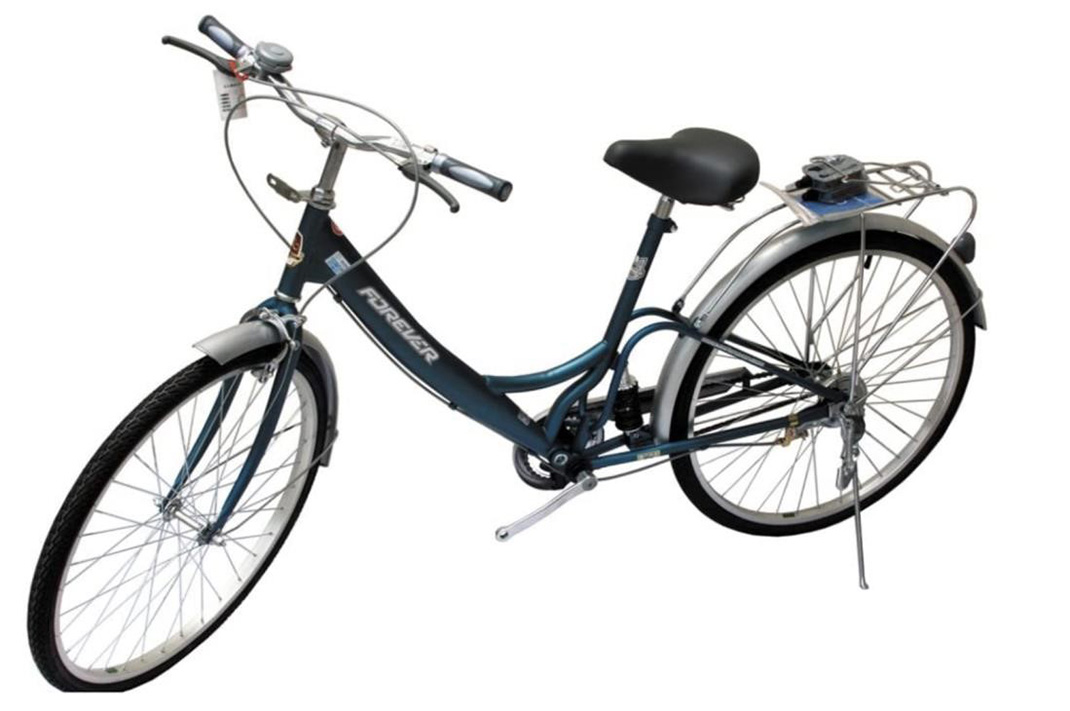
However, the step-through frame had obvious drawbacks: by removing the crossbar, this design had compromised both durability and load capacity (that the 28-dagang otherwise possessed with the diamond frame). On the other hand, as the Chinese people were paying a lot of money for each bicycle, naturally they would give preference to a more durable model. Makers of bicycles with step-through frames therefore had to compensate for the decreased sturdiness and safety by utilizing thicker and more robust materials if they wished to produce a marketable product. Unfortunately, because there was a shortage of high-quality steel in socialist and early reform China to begin with, bicycles with a step-through frame became uneconomical, and could never quite compare nor compete with diamond-frame bicycles.
As a result, women rode the 28-dagang, too, and there was a good reason for this: during the socialist and early reform period, most families could not afford two bicycles, so, even though ladies’ bicycles were available, the best choice would still be to own a 28-dagang. As a famous socialist China propaganda proclaimed, “women could hold up half the sky,” women were thus encouraged to do the same work that men did, including riding even a masculine bicycle. Moreover, as pants took over dresses and skirts to become the predominant attire for working-class and peasant women, mounting a 28-dagang via the side mount method was no longer that difficult for them. As for the children, the 28-dagang was too big for them to ride to begin with — if they tried at all, they would have very awkward and uncomfortable posture. Therefore, instead of assuming a seat on the saddle, they should learn to balance themselves on the crossbar and just enjoy the ride with their parents. Ultimately, bicycles during this time were expensive possessions; they were not meant for children.
Epilogue
The 28-dagang continued to dominate the bicycle market in the late 1980s when the ration system was suspended, but they gradually went from being expensive to affordable. The model continued to be popular in rural China until the late 1990s, as peasants still needed it to carry objects from place to place. On urban roads, on the other hand, more and more new models could be seen amidst the hordes of bicycles. In the 1990s, bicycles with 26-inch wheels began to dominate the bicycle market in urban China. The big crossbar that used to be the hallmark of mens’ bicycles began to lose favor with younger urban dwellers, and, for them, the 28-dagang became a synonym for being old-fashioned, unwieldy, clumsy, and provincial. Moreover, less and less were bicycles used to carry heavy loads. Instead, since most urban couples could afford to buy separate bicycles, they preferred lightweight models for everyday mobility. Both production and sales of the Q — qingbian xing (轻便型, “lightweight”) — type increased.
Gendered bicycles continued to exist for another decade — in fact, the bicycles that were gifted to the Bush couple were gendered — but, in the late 1990s, this bifurcation was removed; such categorization was more a social construct than was technologically motivated in the first place (i.e., from a technological standpoint, there was nothing innately gendered about the bicycle designs, to be sure). In recent years, nearly all shared bikes in China have had a step-through rather than a diamond frame, and it would be hard pressed to find anyone in China today who call a bicycle with a step-through frame a ladies’ bicycle. The generation that grew up in the late 1980s to the 1990s mostly learned to ride bicycles via the ready-mount method. Soon, with the popularity of the step-through frame, the side mount method, which used to be their (grand)parents’ way of riding, all but disappeared among cyclists.
Footnotes
- Zhang Chijian 张持坚, “Xiang bushi fufu zeng feige 向布什夫妇赠‘飞鸽’” [Giving ‘Flying Pigeon to the Bush couple as present’], Beijing jishi 北京纪事 [Beijing document], no. 3 (2008): 73–73; Shang Zhi尚之, “Lao Bushi de Zhongguo yuan” 老布什的中国缘 [Bush the senior and his relationship with China], Nanfang renwu zhoukan 南方人物周刊 [Southern people weekly], no. 24 (2011): 51–53.
- Chen Subai 陈素白, Jingxiang yu liubian: Zhuanxing qi zhongguo chengshi jumin xiaofei bianqian, 1978 zhijin 镜像与流变:转型期中国城市居民消费变迁,1978年至今 [Reflection and Change: The Shift of Chinese Urban Residents’ Consumption during the Transformation Period since 1978] (Xiamen: Xiamen University Press, 2016), 155–157.
- Erin Thomason, “China’s New Kingdom of Bikes: Bicycling and the Quest for Modernity,” Journal of Consumer Culture, https://journals.sagepub.com/doi/full/10.1177/1469540518806948; Edward J. M. Rhoads, “Cycles of Cathay: A History of the Bicycle in China.” Transfer 2 (2012): 95–120; Xu Tao, “The Popularization of Bicycles and Modern Shanghai,” Frontiers of History in China 3 (2008): 117–138.
- Xu Tao 徐涛, “Ta che er fei: zixingche yu zhongguo qicheren, 1868–1949 nian” 踏车而飞:自行车与中国骑车人(1868–1949年) [A history of the Bicycle and Chinese Cyclists, 1868–1949], Cross-Currents: East Asian History and Culture Review, E-Journal No. 3 (Jun 2012), https://cross-currents.berkeley.edu/ejournal/issue-3.
- Huang Kailiang 黄开亮 and Guo Keqian 郭可谦 (eds.), Zhongguo jixieshi hangye juan 中国机械史·行业卷 [a history of machinery in China, volume on industry] (Beijing: Science and Technology Press of China, 2015), 1145.
- One may wonder why were the two famous bicycle producers in Shanghai called the “first” (even though the Shanghai Bicycle Plant did not have the word “first” in its name) and the “third” plants? What about the “second” plant? Actually, there used to be a factory called the Shanghai Second Bicycle Plant, which was established in 1958. But it switched to manufacturing motorcycles in the early 1960s.
- Huang Kailiang and Guo Keqian eds., Zhongguo jixieshi hangye juan, 1146.
- Yang Bo 杨波 (eds.), Zhongguo qingongye nianjian, 1949–1984 中国轻工业年鉴,1949–1984 [Yearbook of China’s light industry, 1949–1984] (Beijing: Encyclopedia press of China, 1985), 129–130; Zhang Ming 张明, Zhognguo dangdai sheji quanji di shier juan 中国当代设计全集 第12卷 [Contemporary Design in China, vol. 12] (Beijing: Commercial Press, 2015), 318–319; Xu Dixin 许涤新, Zhongguo gongye chanpin da cidian 1 中国工业产品大辞典 1 [Dictionary of Chinese industrial products, vol. 1] (Fuzhou: Fujian Science and Technology Press, 1988), 535.
- See Roger Lloyd-Jones and M. J. Lewis, Raleigh and the British Bicycle Industry: An Economic and Business History, 1870–1960 (New York: Routledge, 2000).
- “Fenghuang hun: shanghai zixingche sanchang jianku chuangye jishi” 凤凰魂:上海自行车三厂艰苦创业纪实 [The soul of Phoenix: A record of the Shanghai Third Bicycle Plant’s arduous and hardworking days], in Huoli: Shanghai qiye wenhua jijin 活力:上海企业文化集锦 [Vitality: Collected essays on entrepreneurship in Shanghai], edited by Xu Yichun 许一春 and Bai Shi 白石 (Shanghai: Shanghai People’s Press, 1990), 166–177.
- For Roadster bicycle, see the “Bicycle” entry in 1911 Encyclopædia Britannica, https://en.wikisource.org/wiki/1911_Encyclopæ dia_Britannica/Bicycle; for Raleigh Roadster, see https://www.sheldonbrown.com/retroraleighs/roadster.html
- For the pricing and usage of bicycles in socialist and early reform China, the main sources that I have used include: Zhu Yehui 朱叶慧, “xiri fenghuang kanbi benchi” 昔日“凤凰”堪比“奔驰 [The Phoenix was comparable to Mercedes-Benz], and “Wanjin liang qiu mai yiliang yongjiu zixingche” 万斤粮求买一辆“永久”自行车 [Ten thousand kilogram of grains for one Forever bicycle], in Jia Yan 贾彦 (eds.), Shanghai lao pinpan 上海老品牌 [Old brands of Shanghai] (Shanghai: Shanghai cishu chubanshe, 2016), 7–14; Tu Minghua, Che dui che, mi dui mi 车兑车,米兑米 [Bicycle in exchange for bicycle, rice in exchange for rice] (Ningbo: Ningbo Press, 2015), 219–221; Li Dai 李呆, Chunfeng huakai: wosuo jingli de 1976–1985 nian 春风花开:我所经历的1976–1985年 [Spring breezes and blossoms: the years 1976 to 1985 in my experience] (Hangzhou: Zhejiang Gongshang University Press, 2018), 172–177.
- See Wiebe E. Bijker, Of Bicycles, Bakelites, and Bulbs: Toward a Theory of Sociotechnical Change (Cambridge MA: The MIT Press, 1995), chapter 2; Julia Christie-Robin, Belinda T. Orzada, Dilia López-Gydos, “From Bustles to Bloomers: Exploring the Bicycle’s Influence on American Women’s Fashion, 1880–1914,” The Journal of American Culture 35(2012): 315–331.
